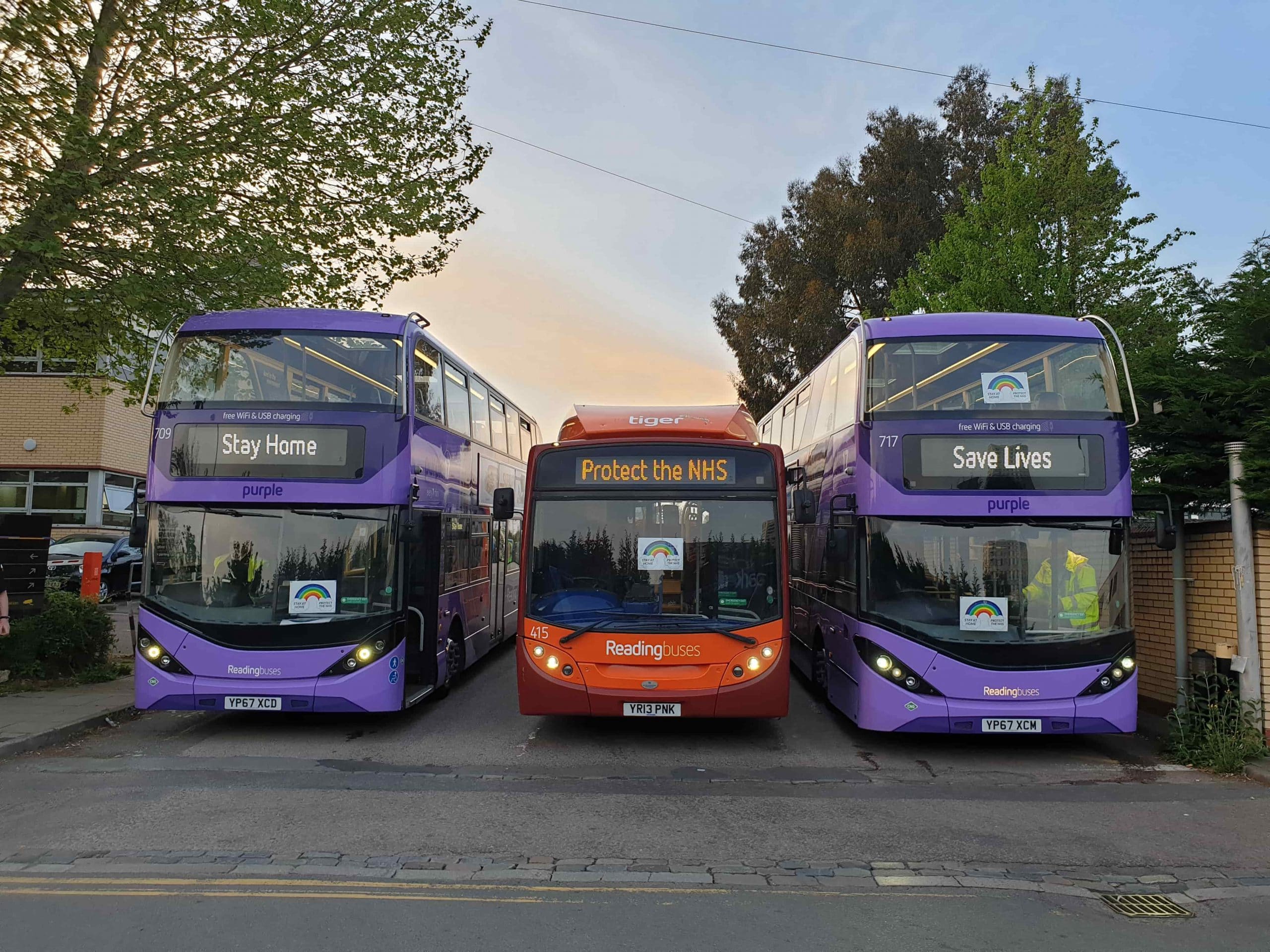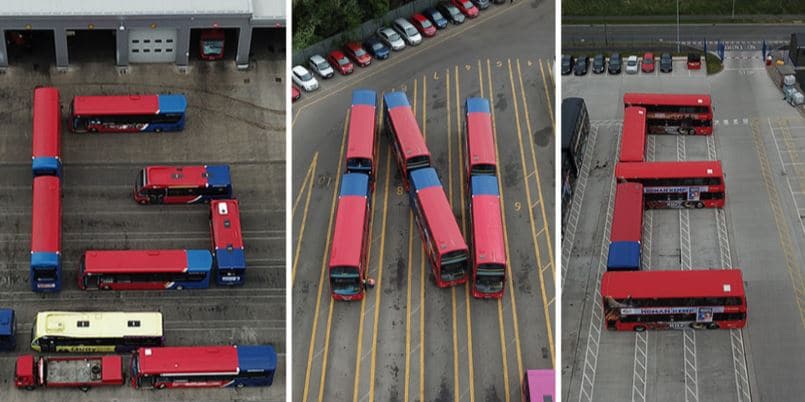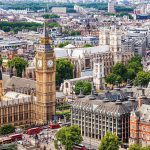Operators in England and the Confederation of Passenger Transport have answered questions on how social distancing will be enforced as the UK government eases lockdown restrictions – and how services are expected to return to normal levels with only a fraction of the revenue
On 12 May the Department for Transport (DfT) published new guidance for safer transport operations during the next phase of the coronavirus COVID-19 pandemic.
In addition to guidance for passengers urging adherence to the ‘two metre rule’ where possible, to travel only when necessary and use contactless payments, it advised transport operators on how best to protect workers and regulate passenger flows. As part of its safer transport guidance it recognises that social distancing ‘will not always be possible’, such as when boarding or alighting, during security checks, on busier servicing and when undertaking some maintenance work.
Operators are thus left to agree their own approach to social distancing policy for all workers and passengers. But while doing so, they must also prepare for an increase in services with only a fraction of the revenue they previously relied upon.
Social Distancing at the Oxford Bus Company
Managing Director of the Oxford Bus Company (OBC) Phil Southall explains that social distancing on its vehicles will vary depending on the groups that are travelling.
OBC has developed graphics for the cab door of each vehicle notifying passengers of that reduced capacity. Capacity will be set within two thresholds – 25% of normal seating capacity for single travellers (on a double-decker with 75 passenger capacity that will see a limit of 18 users) and a maximum of 40% of the seating capacity (30 users) to accommodate couples or family groups able to sit closer together.
Drivers are left to determine safe capacity at their discretion. Audio-visual announcements further advise passengers on social distancing and face coverings. Lines mark boundaries for passengers awaiting to alight in order to maintain the two metre rule. “We’re trying to encourage people to use common sense to help regulate the loadings on the buses,” Phil says.
OBC is prioritising safety for its drivers by providing temporary screens on vehicles without a security barrier, enhanced cleaning, and gloves for handling cash. One-way systems and external sign-on procedures in its depots protect workers.
Given that the formal advice from government is to avoid public transport if at all possible, Phil acknowledges this would be ‘catastrophic’ for the company under normal circumstances. “But I think we recognise that customers listen to that and will be more willing to access public transport on our terms,” he adds. “We have to manage the situation. The overarching principle at the moment is to give our customers and staff confidence in coming back to work and feeling safe.”

When buses reach capacity, drivers are instructed to contact OBC’s control office to alert it to the site of any overloading. Depending on the resources available, the overloading can then be resolved. OBC is prepared to be flexible with its schedules in order to react more quickly to any capacity challenges. It is planning on putting back an increased service level from 1 June as per government requirements, with traditionally operated routes in structure, though with frequency trimmed in order to achieve better balance between quieter and busier routes. “The critical thing is that drivers feed back to the control room to allow us to come up with contingency plans as we match capacity to the people who need to travel,” Phil says.
OBC is further preparing for mid-September when students are traditionally expected to arrive. If social distancing measures have not eased by that time and students return to the city, sticking to the two metre rule will present challenges.
Normality a long way off
Phil does not expect ‘normality’ for at least another 12 months. “We’re going to have some form of social distancing until there is another way to control it,” Phil believes. “We are hoping people will return to public transport in due course. All the indications are that it will not happen for four to six months. Until then it’s our responsibility to provide reassurance that public transport is safe as social distancing relaxes.”
Funding will be the biggest challenge. Unable to run buses at normal capacity, commercial operators will largely be reliant on support from government. “If it’s not coming through the fare box in the volumes needed, it has to come through another way,” Phil says.

Much of the industry remains in discussions with government over what a second COVID-19 Bus Services Support Grant (CBSSG) for English operators would look like, and how long it will last. “Our view is that we will need support for about 12 months,” Phil explains. “Over time we may have to spread the peak of passenger numbers, much as the government wishes to spread the peak of the virus. Spreading out the opening of schools and business would be incredibly helpful and help us to cater for as many people who wish to travel as possible without being overwhelmed.”
Phil encourages operators to work with national and local government. It is also crucial, he says. “The end result has to be that we continue to leave the commercial operators to do what they do best – plan services, best match demand to supply, and innovate where we need to – and to ensure local authorities (LAs) don’t take advantage and control buses at a time when the industry needs a bit of life support.”
Community transport perspective
Brighton community transport operator The Big Lemon saw demand for its services plummet at the end of March, when the lockdown was announced. It reduced its timetable to a sustainable service for the duration of the lockdown on 1 April, and launched a revised timetable this week (Monday 18 May) offering more journeys. With passenger revenue negligible, services are reliant on partnership or under contract to Brighton City Council.
The Big Lemon Chief Executive Tom Druitt sees the primary issue of the social distancing dilemma as matching passenger demand to capacity. “As things pick up, we do need to restrict capacity to maintain social distancing,” he says.
Passenger numbers are expected to be restricted to eight individuals or 14 pairs on a vehicle normally expected to carry 30 seated passengers and 28 standing. The question of schools is a difficult one, as a vehicle normally expected to seat 58 will see only 10 passengers.

The Big Lemon has agreed an open book approach with Brighton City Council. It is being open about its cost and income and realistic in terms of what it can afford to do. In return, Tom says the council has been supportive on the situation in terms of extra capacity. Extra vehicles will doubtless be required to meet social distancing requirements and the council will need to pay. “It’s down to LAs what they decide to do and down to government,” Tom says. “If the LAs are asked by government to open schools again, but operators have limited capacity on buses, it will become government’s problem. It will have to back up its policies with the finances to pay for them – it won’t work any other way.”
Extra vehicles would be sourced from the Big Lemon’s existing capacity. It is running reduced services compared to pre-coronavirus COVID-19 levels and is also able to dip into its coach supply owing to the drop in demand on that side of the business.
For measures onboard, it has cordoned off every other seat on both sides of the vehicle meaning for every six seats there is only one occupant. But Tom is concerned for rural and interurban services that will see a drop-off in passenger numbers. “LAs are going to be asked to fund the difference for those services which has seen a collapse in patronage. Sometimes they will, and some will not be able to. When they cannot it will be a tragedy, as it will bring extra social isolation when those services are lost.”

The increased service launched on Monday is planned to run until September. The Big Lemon works on the basis the lockdown and furlough schemes will largely have ended by that time, but social distancing will continue. Tom does not believe social distancing will end until 2021 at the earliest.
Financially, he argues that the business model of buses needs to change if 25% passenger numbers become the norm. “The whole industry may need to move on from reliance on passenger income,” he says. “It could mean two things. Either the public sector needs to fund the difference – and ultimately that depends on whether people value local public transport enough. Or, if money is not forthcoming, we will see a devastation of bus services like we have never seen before.”
Reflecting on the government advice to avoid public transport, Tom believes a better message would have been for the Prime Minister to announce proactive working with operators to ensure public transport is safe for use. With long-term industry changes on the horizon, proactive measures to encourage people back to the bus is essential. That raises questions – such as whether buses and services will have to be redesigned to allay virus fears, and if volume-based bus services will have to change to better reflect lifestyle changes such as working from home.
Regardless, buses will continue to be an essential part of the community infrastructure, Tom says. “But how they’re delivered and how people use buses will be very different in the future. The big question for us all is what does that look like – and how can we start moving to that now, so that we can maintain our contribution to communities we serve?”
CPT working with government
The Confederation of Passenger Transport (CpT) has long been in conversations with government about funding support. As operators ramp up services, External Relations Manager Tom Bartošák-Harlow says CPT does not expect to see a corresponding uptake in passenger numbers, and so is speaking with the DfT and the treasury about additional investment into the industry for expanded services and a more comprehensive network.
While the last tranche of funding for £167m in the CBSSG and additional top up to £400m for continuance of BSOG, concessionary fares and contract payment at pre-coronavirus COVID-19 levels was welcomed, CPT is keen for no cap to exist on a second round of funding. “We think the funding will need to be in place for a long time,” Tom explains. “Social distancing isn’t going away any time soon, which means reduced capacity on buses. There needs to be flexibility in how much that funding can provide to reflect potentially fluctuating passenger numbers over the coming weeks and months. A cap on funding removes that flexibility.”
CPT Chief Executive Graham Vidler raised questions with the Secretary of State Grant Shapps last week on the messages from government as services are prepared for expansion. CPT acknowledges the logic behind government’s message to avoid public transport, as it will avoid overwhelming limited capacity on the transport system. However, later in the campaign CPT urges government to recognise the need to encourage users back to public transport. “A government message to avoid public transport for a long time can be a heavy influence on people’s behaviour,” Tom says.

“It’s a sensible message for now, but clearly there is going to be a need for government in the future to work with the industry to promote the benefits of bus travel,” he continues. “Over the last few weeks of lockdown we have benefitted from lower pollution and better air quality, and we want to ensure the benefits of less car travel remains to be seen with promotion of the benefits of bus travel at the appropriate time.”
Passenger return will be affected by a host of factors, but CPT is pressing government for an announcement of additional funding as soon as possible. “The industry is already getting buses ready to come back into service by bringing engineers back off furlough, but operators do not want to bring drivers back and incur the costs associated until they know the situation with funding. The sooner that is in place, the sooner those services can start running again.”
That funding should ensure operators are not left out of pocket for any services run, covering costs between money from LA funding for concessionary fares or lack of revenue from the fare box.
Tom says the government has been open to the need to recognise further funding. “The key now will be delivering and bringing forward that investment if we want to ramp up services quickly.”
In the meantime, CPT has been working with its operator members on social distancing advice. It recommends a capacity limit of 20-25% and has communicated advice on how passengers can play their part. “It’s going to be impossible for a driver to police social distancing on their bus,” Tom says. “It’s for everyone to work together. Operators must communicate clearly to passengers around what they need to do to help everyone stay safe; passengers then need to follow that guidance.”

A question of support
The major question as it stands seems to be where government funding will go next for industry life support.
The job retention scheme has been the major salvation for many operators, and if expected to return to normal levels as the CBSSG ends, the requirement for drivers to return will remove that advantage for all but those in the vulnerable categories.
It is imperative that government makes clear what support for the industry will become available when the CBSSG ends in June. Without adequate funding, the only option for many would be continued reduced services in order to take advantage of the job retention scheme. That may put passengers off returning to bus in future, or limit the ability to return frequencies to pre coronavirus COVID-19 levels.
On-paper, it seems fairly obvious – a bus fleet running at 100% frequency when carrying only 25% of its load is not sustainable for long.




























